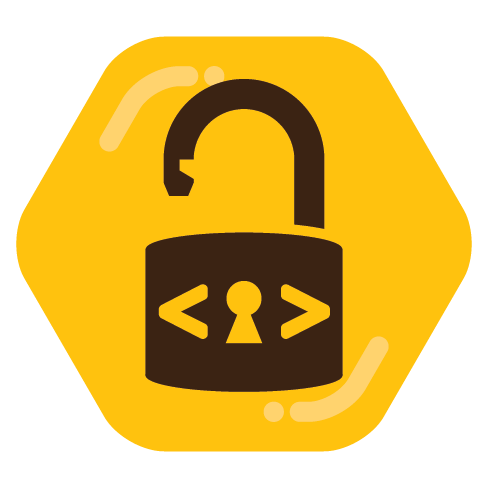

Can confirm that yt-dlp works perfectly for TikTok videos


Can confirm that yt-dlp works perfectly for TikTok videos
Thank you for telling me about Podlet. I’ve been using podman-compose for all my containers but I’ve thought about converting them to systemd units. The only thing I’m unsure about is whether it’ll still be easy to access the container files. Currently I have a containers folder with a folder for each service inside it. Inside that, there’s the compose.yml and the folders with the container data. I map all container folders, with data that needs to be kept, to a folder that sits right next to the compose file. If it’s just temporary data (like caches), I oftentimes map it to a volume because it doesn’t matter if I lose it. Do you know if I can still do it like this (or in a similar way) if I use systemd units?


I meant to write OnlyOffice 😭
But thanks for pointing it out, I fixed it


Those distros are fine, I haven’t heard anything bad about them. The only distros I wouldn’t recommend are Ububtu and Manjaro (I can explain why if you want).
About Excel, it doesn’t work on Linux unfortunately. But you have some options. You can try LibreOffice and OnlyOffice (you can install them on Windows to try them out before switching) and see if they’re enough for your needs. There’s also a web version of Excel which you can use in your browser but it doesn’t have all the features. If you really need Excel, you can also try using a virtual machine with Windows and run it inside of that but dual booting might be easier for you at that point.


I don’t really know what you mean by checking. I’m pretty sure you can import from there but I haven’t used that yet anyway because not a single food I’ve looked up there has had enough data for it to be usable for me and a lot haven’t been added at all. Might be because I’m in Germany tho.
Edit: I’ve actually imported a product that did have all the information and it worked perfectly fine. You just share the link from OpenFoodFacts to Food You. Only monounsaturated and polyunsaturated fats didn’t import but I’ve already opened and issue for that and it’ll be fixed in version 3.


Food You is the one I use. Looks like they’re pretty similar tho, at least from the screenshots.


I use podman too and I set up hardware acceleration for Jellyfin. I’ll update this with how I did it once I’m home.
Edit: Here’s my compose.yml (I use podman-compose):
services:
jellyfin:
image: lscr.io/linuxserver/jellyfin:latest
container_name: jellyfin
dns:
- 9.9.9.9
environment:
- PUID=1000
- PGID=1000
- TZ=Europe/Berlin
volumes:
- ./config:/config:Z
- ~/drive/media:/media:z
devices:
- /dev/dri:/dev/dri
ports:
- 8096:8096
- 7359:7359/udp
- 1900:1900/udp
restart: unless-stopped


yt-dlp supports a ton of sites (not just youtube). It’s a command line program but there’s a lot of different GUI frontends, like Seal (Android) or Parabolic (Linux and Windows).
I don’t know if it supports the site you wanna use (someone else already said that 9anime was shut down, so the site you’re using is likely a fake and you should use another one) but there’s this list of supported sites.


I actually use the Vesktop Flatpak. It’s got working screen sharing with audio on Wayland (not sure if the official client has implemented that yet) and it has Vencord preinstalled for plugins and themes.


I’m not even trying to argue against you, I’m arguing for veganism. The same arguments that you used for why the use of AI is bad can be used for why not being vegan is bad. The production of animal products even has a way bigger impact.


Not trying to instigate a fight but if you make this argument, I hope you’re also vegan


Yes, I think it’s called Yukkake
On GNOME you set the GTK theme using Tweaks or Refine (Tweaks is preinstalled most of the time but Refine is a newer replacement that’s a lot nicer to use). Using one of these two will probably work on any other desktop or WM too.
I’ve used it when I started out and it’s good, I can recommend it if you just want something where you can hit install and it works. I just use docker containers now though because I have more experience and it allows to set everything up exactly how I want.
Maybe I should install one of these but I would have expected Fedora to come with something like this preinstalled tbh


I just don’t think it looks very good. I know that everyone has different tastes of what looks good but I personally love modern design when it comes to UI and IMO Android was the best looking OS UI and right after that GNOME. But part of why I think both of them look so good and why I think they even look better than Apples design, is that they don’t use blur. I don’t think it really fits into the Material 3 design language.
I’ve used Linux for years and I also have a ~/Applications folder where I put AppImages, applications cloned with git and stuff like that in. E.g. I have the last Yuzu AppImage in there, since it got taken down, but I also made a .desktop file for it, so I can launch it through the application menu. Btw, you should be able to just double click AppImages in your file explorer to open them.


I know that OP already found the solution but I just wanted to chime in because every person who commented completely misunderstood the question. It’s normal that some extenions don’t support the new version after updating GNOME but in that case, the switch will be disabled and it will show you a warning that the extensions doesn’t support the new GNOME version. OP clearly stated that they could still switch the extensions on and off. Besides that, most extensions will already have been updated to support the new version by the time the Fedora update comes out, so it wouldn’t make sense that all the extensions wouldn’t work anymore.
As a tip, you can install “Extension Manager” instead of the default “Extenions” app and besides being able to install extensions right through the app, it also has an “Upgrade Assistant” function, which lets you check which of your extensions support the GNOME version you specify. That way you can check if your extensions will work in the new GNOME version before updating.


Hey hey hey, hold on just a second. It’s not called “maximizing profits”, we don’t do that! It’s called ✨innovation✨
VR on linux actually works just fine from my experience. I’ve never had a game not work. The big issue is just headset support. The HTC Vive and Valve Index are the only headsets with official drivers, since they were made by Valve. Standalone headsets, like the Quest for example, also work using ALVR. Anything else doesn’t really work. There are open source drivers but they’re not complete enough to be useable unless something majorly changed there since I last checked.